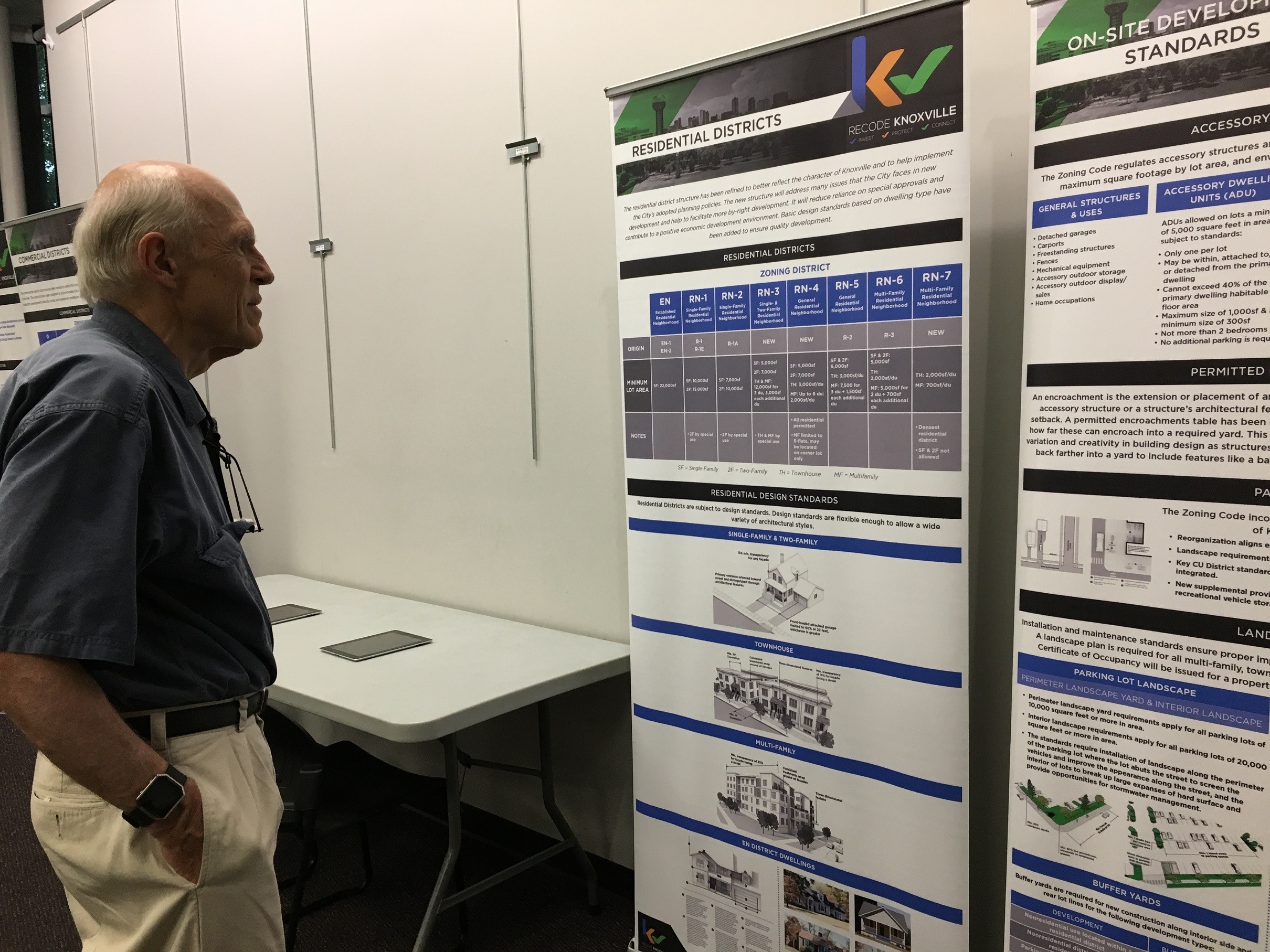“Let’s rewrite the entire zoning code—all 200 pages of it, hold a few 1-hour public information/input meetings, and then ram it home before the Christmas break.”
That seems to be the unspoken strategy anyway. It’s a bit scary.
Is the current code somewhat dated? Yes. Has the consultant’s draft added helpful charts, summaries and graphics? Yes. But the current city zoning code is not a fossil.
We have made a number of changes to this code over the years, through action by city council, as community needs and problems arose. It certainly has not been a purely static document, sitting on a dusty shelf the last 50 years. Witness the creation of a mixed-use district for the South Knoxville Waterfront, the standards for home offices, addition of community gardens, the hillside/ridge top plan guidelines, the sign and parking ordinances changes, provisions for B&Bs under defined standards, allowance of backyard chickens, the location of breweries and brewpubs, etc. Those items were debated individually and at length before final adoption by city council.
Recode Knoxville changes our zoning code. What are the indirect or hidden costs and impacts to our several neighborhoods and individual properties?
The question that must first be answered is: what is our city’s vision going forward? For a zoning ordinance sets out land use rules and standards that help assure that vision or goal is realized. To use a travel analogy, for a map to be helpful, you must first choose a destination.
Where are we and where are we going? The July 26 second redraft is now out for comment. The current code is known as Euclidean zoning (named after a 1926 U.S. Supreme Court decision in Village of Euclid v. Ambler Realty, which authorized communities to adopt reasonable land-use zoning rules as part of their inherent police powers). Such zoning essentially groups like activities together, and thus provides some separation from other activities that might disrupt them or impair the use and enjoyment of one’s property. Thus, for example, low density single-family housing is grouped away from more intense commercial centers and industrial activities. Office zones help provide a reasonable transition or buffer between residential and more high traffic commercial uses.
What’s driving the proposed ordinance? Aye, that’s the rub. It’s not been publicly aired sufficiently. Rather, like the dragon teeth sown by the gods in Greek myth, it sprang from the soil, fully armed in a March 21 first draft written by the mayor’s consultants (Camiros). At a minimum, the proposed ordinance seeks more density, more mixed uses, less public scrutiny of “special uses” which now will be decided by planners meeting in back rooms, sheltered from public scrutiny. The latter point is probably good for more rapid development. But it may leave the affected neighborhood in the dark. So, each of those objectives (there may be others) should be carefully considered first and publicly debated. We shouldn’t really adopt a new zoning code without fully considering our objectives. Otherwise how do you judge the hundreds of technical rules proposed for rapid adoption in the 200 pages that few citizens have actually read? It’s dry stuff. But it affects our future.
To be continued…

